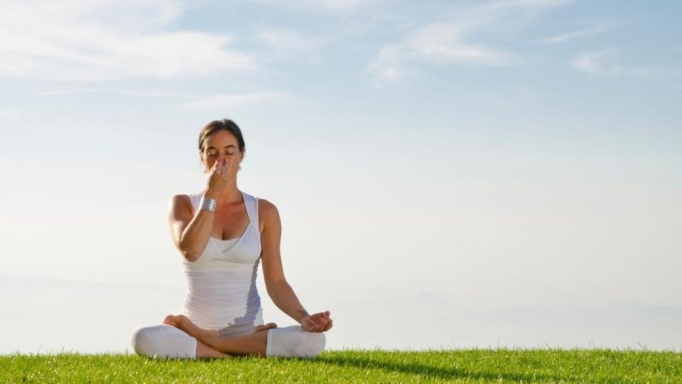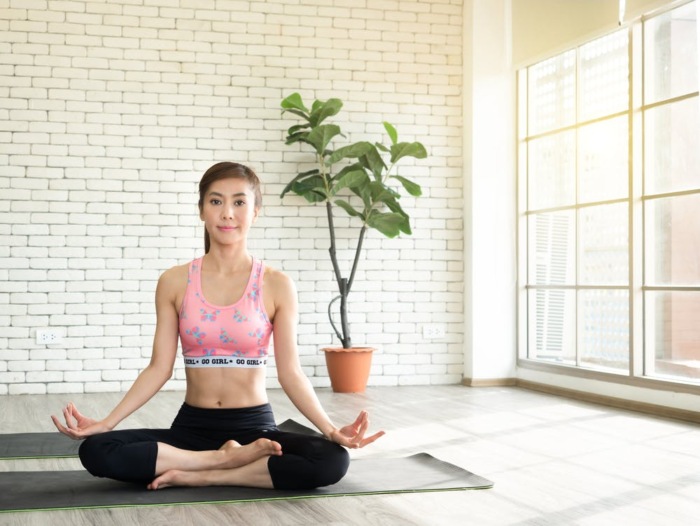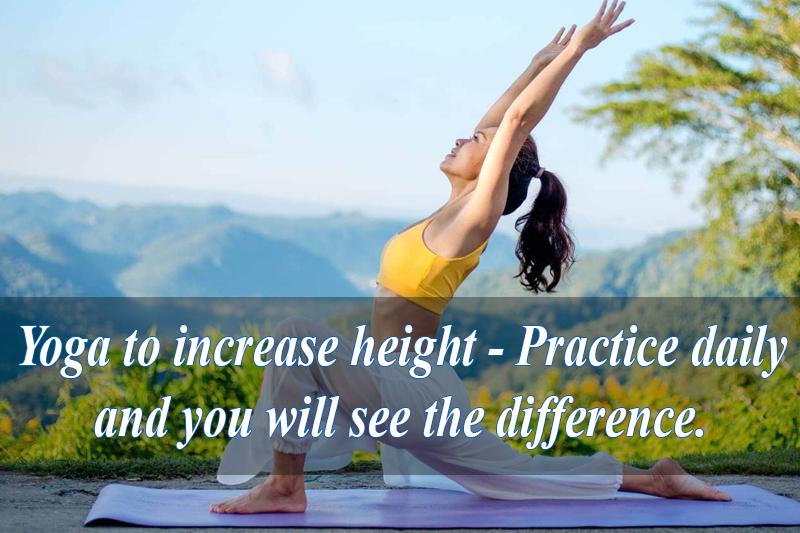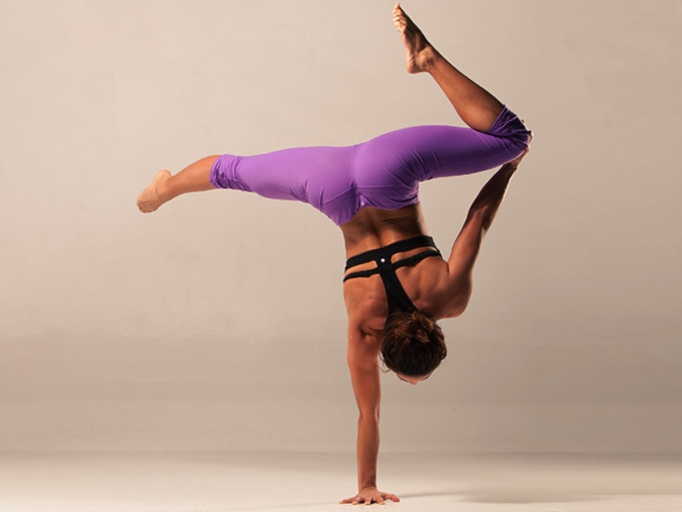You may be hearing somewhere or a document that if you control your breath, you can control your health. Yoga is one of the best ways to practice breathing.
Don't be too surprised when in the first sessions, yoga instructors always ask you to try to stick your tongue out of your mouth or expand your belly when you inhale.
In yoga, proper breathing is just as important as correct posture. So how is breathing in yoga done? BellyFatZone invites you to follow this article: Breathing in yoga: Important things to note to be effective
Why is breathing in yoga important?
Correct movements when practicing in combination with breathing in rhythmic yoga and proper techniques help blood circulation better.

Thereby increasing the time to absorb oxygen into the blood, helping to preserve the functioning of internal organs and endocrine glands in the body. Maintaining the correct way of breathing during yoga practice will help you feel more relaxed in your body, more flexible in your mind, and much more alert.
Originally rooted in meditation, breath control is also the “soul” of yoga. If you try to do the right movements without knowing the right way to breathe, then what you are testing can have the opposite effect on your health. Even many cases of wrong breathing when practicing yoga also affect the nervous system, causing headaches, dizziness, difficulty concentrating, etc.
When sitting still, without vigorous exercise, we do not need to put much oxygen into the body, too much CO2 is also harmful: the pH of the blood will rise, making us dizzy. Many people who are new to breathing make this mistake in their yoga breathing. When sitting still, still try to breathe deeply, forcefully and heavily.
In sitting meditation, like in Yoga, the right way to breathe in yoga is to breathe deeply, gently, steadily, and slowly.
If we regularly breathe slowly and gently, we will gradually adjust the entire psycho-physiological activity of the body, this is the most convenient and simple way to keep healthy. Do you know why breathing in yoga is so important? Let's learn how to breathe yoga properly to practice effectively.
Technical instructions for three ways to breathe in yoga
Bhastrika breathing technique (Belt breathing)

This is the most common and basic deep breathing technique; this breathing method in yoga is very suitable for those just starting to practice breathing and yoga.
According to the Bhastrika technique, deep breathing helps increase energy and detox extremely effectively. Because when you practice, you will hear and feel the air going through your nose to make a sound similar to a forge bell; this is also why breathing in this yoga is so named.
Proceed as follows:
Step 1: Sit with your back straight, keep your neck straight, chin slightly forward, sit cross-legged, and gently place your hands on your thighs.
Step 2: You relax the abdominal muscles and inhale strongly and deeply through the nose so that the abdomen expands and the two sides of the belly expand. Then exhale with the same force, pushing all the air out, so the abdomen collapses.
Note: Every ten deep breaths, relax and breathe normally for about 15 seconds. This process can be repeated five times, but each exercise should only be done for a maximum of 5 minutes.
Breathing in yoga plays a vital role because this is a “necessary condition” for yoga to benefit the practitioner's health. Correct breathing helps you stay focused while exercising, regulate your body, reduce stress and stabilize your mind.
View more: Does yoga help sexually? Yoga Poses To Increase Sexuality For Men And Women
Ujjayi Breathing Technique (Ocean Breath)

Among the yoga breathing techniques, Ujjayi is the most effective way to calm the sympathetic nervous system. Helps reduce anxiety and stress right from the first session. You can practice it anytime you feel insecure or stressed.
Doing:
Step 1: First, you sit in a meditation posture with your mouth and your eyes closed, and breathe evenly and gently through your nose.
Step 2: Next, when you inhale deeply, your belly expands to the extent that you start to hold your breath for about 5-6 seconds, then exhale gently. When exhaling, lower your head and chin, resting on the junction between the collarbones, and squeeze your abdomen to push all the air out of your chest.
Note in this yoga breathing, the inhalation and exhalation of this technique should be longer and deeper than your normal breathing.
The way you breathe in yoga plays an important role because the “necessary condition” for yoga to be beneficial is to practice the right posture and breathe at the right rhythm. Correct breathing helps you stay focused while exercising, regulates your body, relieves stress, and stabilizes your mind.
View more: What To Eat Before And After Yoga For Weight Loss?
Nadi Shodhana Breathing Technique (Alternate Nose Breathing)

The effect of breathing in this yoga is to balance the nervous system, relieve stress and effectively purify the body. Yoga enthusiasts and enthusiasts love this breathing technique.
Doing:
Step 1: Choose a quiet place and sit up straight in a comfortable position
Step 2: Next, relax your left hand on your thigh or in your lap and bring your right hand to your face. Fold your index and middle fingers, then use your thumb to close the right nostril and inhale slowly through the left nostril.
Step 3: When you have finished inhaling, use your ring finger to close the left nostril and open the right nostril, then slowly exhale through this nostril. Simply put, inhale through one nostril and exhale through the other alternately.
Note: After doing ten times, you change hands and order to inhale-exhale between the nostrils and do 10 more times.
View more: The Ways Use Yoga To Reduce Belly Fat in 1 Week For Perfect Photos
Six notes in yoga breathing you need to know:

1. Breathe slowly
The second rule in Yoga breathing exercises that we need to remember is not to rush. Everything you do to be effective takes time and perseverance. Breathing is a slow and thorough process. Slowly absorb the energy, and feel each flow of air in and out of the lung cavity. This is the only way to achieve high efficiency.
2. Take a deep breath
Unlike gym practice, in the way of breathing in yoga, the inhalation and exhalation of yoga are done through the sense of smell. Slow breathing, combined with deep breathing, helps bring the entire flow of air, bringing them deep into each core slot in the body. Exhale slowly, expelling all the accumulated toxins in the body to feel more refreshed and healthy.
3. Focus on controlling each inhalation and exhalation
The human brain has many functions, one of which is to regulate breathing, which requires concentration. With concentration, our body can fully feel each inhalation, exhalation, each absorbed energy source. The mind will become sharper and more agile. Practicing and properly performing breathing in yoga and practicing standard exercises will help increase concentration, which positively affects the results of your daily study and work process. Friend.
4. Combine breathing with body movements
How to breathe in yoga, first of all, we must practice the basic activities; when inhaling, the abdomen expands so that the diaphragm moves down, massaging the internal organs. On exhalation, the abdomen retracts, and the diaphragm moves upwards to massage our heart while pushing all the air out.
Inhale deeply through the nose and throat will stretch, then gently exhale slowly. Once you have mastered those basic breathing steps, slowly introduce them into your Yoga exercises, combining them with each movement in each yoga pose so that you can and the breath become one.
5. Incorporating relaxation of the mind
When we often feel anxious, scared, or nervous, our breathing becomes faster and shallower, right? On the contrary, breathing becomes more profound and slower when our mind is relaxed and at rest. Your mind seems so much purer. That proves our mind and breath have an inseparable connection. Therefore, it is necessary to skillfully combine exercise techniques, the right way of breathing in yoga, and a relaxed state of mind in each practice session.
6. How to breathe in yoga – relax the body
According to science, 90% of your energy comes from living. But for the process of practicing breathing in yoga to go smoothly, let your body relax. Don't force yourself or push yourself too hard.
Breathing is to calm the mind, relax, purify the body, to release all worries and sorrows. Therefore, put the whole body in the most comfortable state in Yoga breathing exercises so that the energy source is fully accumulated.
Once you know how to breathe in yoga and practice the correct posture, this technique will quickly bring significant benefits to your health, both physical and mental. Wishing you happy and prosperous training.






